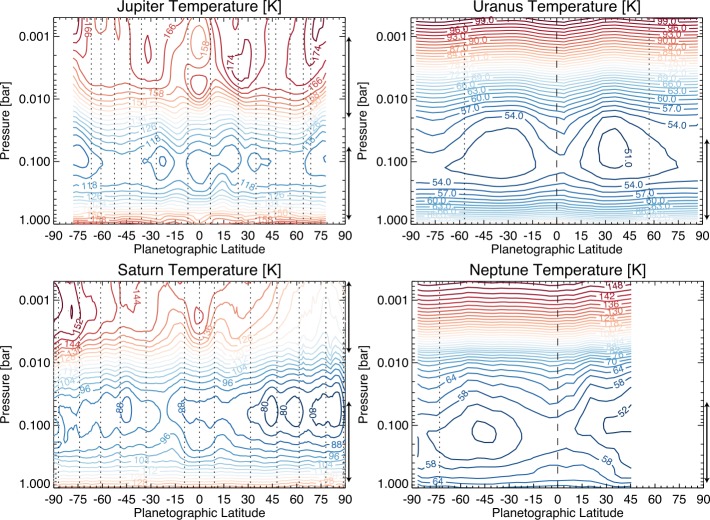Fig. 2.
Upper tropospheric and stratospheric temperatures retrieved from thermal infrared observations from Cassini/CIRS (Jupiter and Saturn) and Voyager/IRIS (Uranus and Neptune) using the NEMESIS optimal estimation retrieval algorithm (Irwin et al. 2008). Jupiter’s temperatures were measured during the December 2000 flyby (Fletcher et al. 2009a); Saturn’s temperatures are averaged from 2006 to 2010, either side of the northern spring equinox (Fletcher et al. 2017a); Uranus’ temperatures were measured during the 1986 flyby (near southern summer solstice) and lack any constraint in the stratosphere (Orton et al. 2015); Neptune’s temperatures were measured in 1989 (Fletcher et al. 2014) but lack the warm south polar vortex that emerged nearer southern summer solstice in 2005. Temperatures are in geostrophic balance with the zonal winds, with prograde jets indicated by vertical dotted lines. Uranus’ and Neptune’s equatorial retrograde jet shown by a dashed line. Arrows to the right of each plot show the approximate altitude sensitivity of the CIRS and IRIS spectra—domains outside of this range are from a smooth relaxation to an a priori profile. Zonal wind peaks are taken from Porco et al. (2003), García-Melendo et al. (2011) and Sanchez-Lavega et al. (2019)

